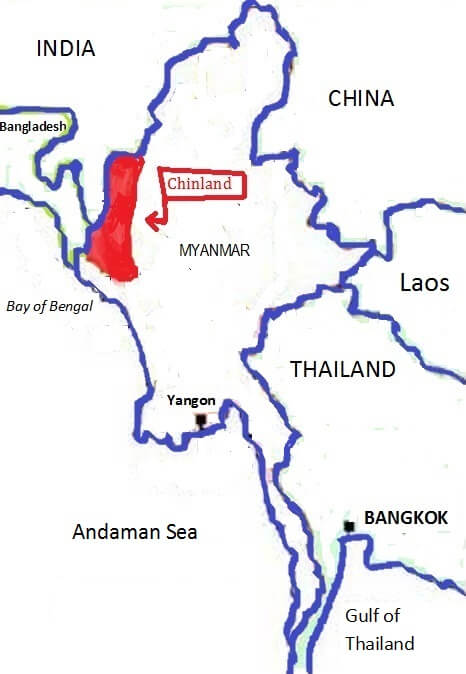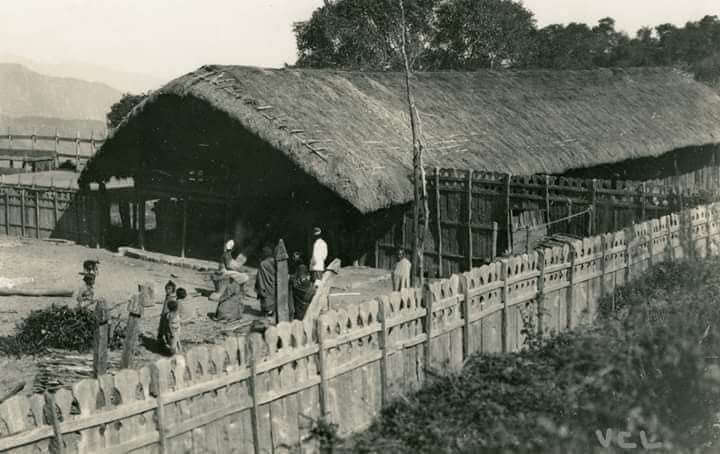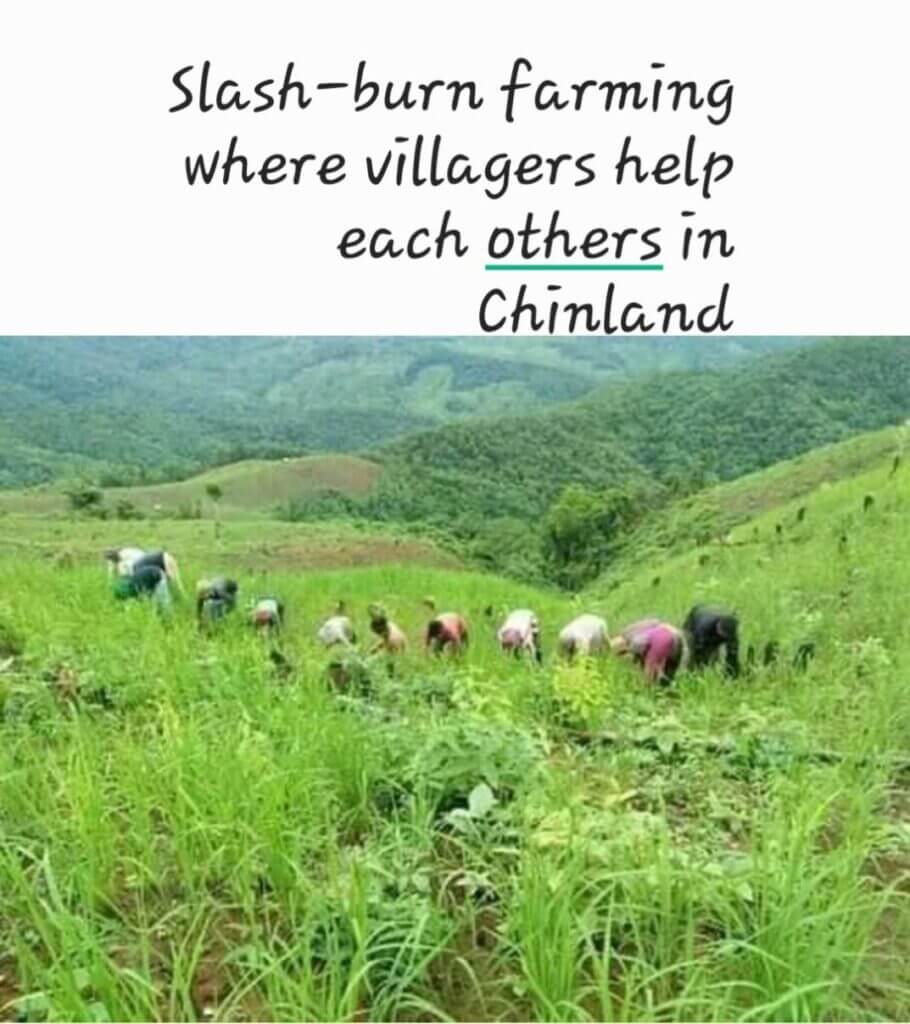
Chin people are of Mongol tribe origin and occupied the southernmost part of the mountain ranges separating Myanmar (Burma) from India. Their history from the 17th to the late 19th century was a long sequence of tribal wars and feuds. The first British expedition into the Chin Hills in 1889 was soon followed by annexation. Before the British colonialist occupied Chin hill, Chinland was an independent country ruled by hereditary chieftainship followed by a ruling system of councils of elders, others by headmen after the British occupation. There were also hereditary chiefs who exercised political control over large areas and received tribute from cultivators of the soil. The occupation by the British at the end of the 18th century brought an end to the free and unified Chinland.
Their territory was divided into separate administrative zones and in 1948, when Myanmar became independent from Britain, the Chin people were further divided as official international boundaries were demarcated which divided into two nations notably one under India and the other ending up under Burma. The whole population of The Chin people is believed to be between 1 million to 1.5 million; 80% and most of them are now living in the Chin state of Burma and Mizoram state of India. Popularly known as Chin State in the modern day is slightly smaller than the size of Switzerland and the population there is roughly half a million people. There are approximately over 50 different dialects among the Chin people and most are protestant Christians. Before the American first missionaries, Arthur Carson and his wife Laura came to Chin hill in the late 1880s, the Chin people were animists but in the present Chin state, most of them are now protestant Christians. Traditional religion comprises a belief in numerous deities and spirits, which may be propitiated by offerings and sacrifices.

Slash-burn farming is the basis of the Chin people’s economy and livelihood; the land is cultivated in rotation, consecutive cultivation for several years being followed by reversion to the forest. Rice, millet, and corn (maize) are the main crops. Domestic animals, kept mainly for meat, are not milked or used for traction. The most important domestic animal among them is mythun, a domesticated breed of the Indian wild gaur.

Chin people are one of the most persecuted ethnic groups in Myanmar since the 1960s. Myanmar has approximately 60 million populations in which Chin are just half a million population living in Chin state. Although 87% of Chin people are Christians, some of them mostly the poor are systematically seduced into attending Buddhist monasteries. The worst thing is any Chin who came out from the Buddhist monasteries get recruited into the Myanmar army as combat soldiers.
Since there are over 50 dialects among Chin people, the Myanmar military exploited this difference to divide us by making one particular group a township or a district. The Myanmar military regime only give promotions to any Chin governmental workers belonging to Buddhist and left Christians under their lower administration staff. One of the worst things in Myanmar is the national identity card on which the card holder’s ethnicity and religion are clearly describe to automatically sideline the Chin people as a marginalized group under Military rule in Myanmar.
Education System Under Myanmar Military Regime
For a Chin Christian, to go up the ladder within Myanmar military rule, one must relinquish his Christianity or marry a Myanmar Buddhist. That is already systematic religious persecution. In every school from kindergarten to high school (the equivalent of grade 12 in North America), teachers can use sticks to beat young students and humiliate them before their classmates if they do not do homework well. All schools in Myanmar are fenced tightly with barbed wires as detention camps for illegal immigrants. Even if you fail the exam, you can still buy a pass from teachers with money. That is why many high school graduates are useless in Myanmar since most of them just bought their graduation or are intentionally allowed by corrupted teachers to plagiarize during final examinations.
Since Chin state does not produce expensive natural resources like others, the only thing we treasure the most is education for our younger generation. Therefore, many Chin parents in North America, Europe, Australia, and other parts of the world prioritize sending their children to schools while they choose to do any available work. Chin people are known as workaholics everywhere they are.

